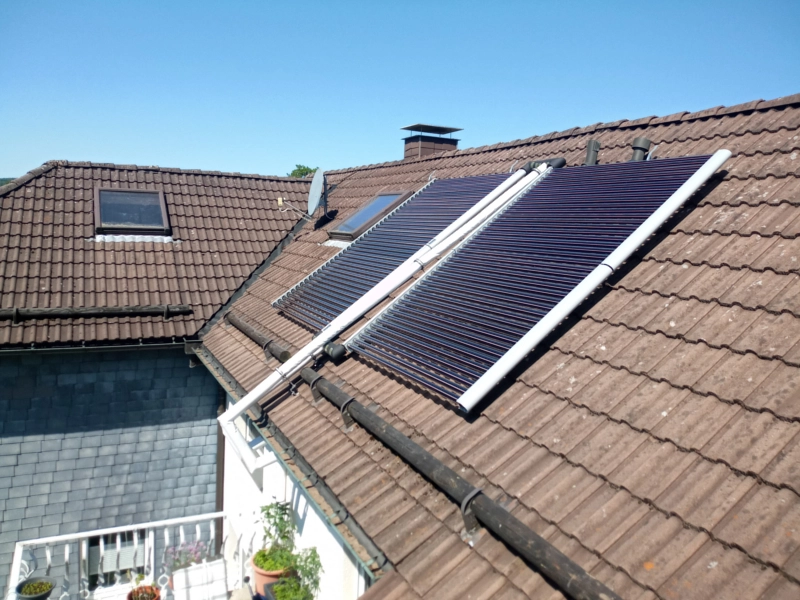-
-
Service & Garantien
Service & Garantien

Recent market studies show a decline in demand for solar thermal systems for heating modernization by around 41%. Overall, however, the market still reflects a positive trend for renewable energies in the heating sector.
Why this perspective?
Due to political decisions and the debate surrounding the Building Energy Act (GEG), heating system owners are being pushed into a corner with very little room for maneuver. Everywhere, the focus is solely on heat pumps and photovoltaic systems as the only politically acceptable ways to achieve CO₂-free heat generation. But no one in decision-making roles is speaking plain truth.
Let’s take a closer look at the use of heat pumps! At first glance, heat pumps seem to generate heat in a CO₂-free manner. However, they require electricity to operate. Where does this electricity come from? Those who are willing to invest in a large photovoltaic system can, on sunny days, generate some free, CO₂-neutral electricity for their heat pump. But in the darker months, from November to March, power must be drawn from the grid – which is currently largely generated in coal-fired power plants or imported from nuclear power plants. Is that still CO₂-neutral?
And at the end of the year, the real question arises: how high will the electricity bill actually be? Because the true consumption of the heat pump only becomes visible during use.
With solar thermal systems, things are different. They only need sunlight to generate heat for domestic hot water or space heating. A system with full vacuum tube collectors can still produce strong yields even under diffuse light conditions – when PV systems have long stopped generating energy. Since the tubes can be rotated individually within the collector, they can always be optimally aligned to the sun to maximize performance.
This raises the question: why does politics not even mention solar thermal energy? Especially when there is so much talk of “technological openness.” Solar thermal energy is far more efficient and, in the end, even more cost-effective than a heat pump. Tube collector systems also require less space than PV systems to achieve the same output, making it possible to use both technologies in parallel. Thanks to their high flexibility in mounting, tube collectors can be installed virtually anywhere – on façades, balconies, pitched or flat roofs, or as a free-standing system in the garden.
In addition, a solar thermal system can be combined with almost any existing heating system. This means homeowners can continue using their oil, gas, or pellet heating and simply expand it with a solar thermal system tailored to their needs. This allows for a reduction in fossil fuel consumption of up to 50%. Homeowners can even apply for a subsidy of currently 25% through the BAFA for the installation of a solar thermal system – covering not only acquisition costs but also the complete installation.
In the end, it must be said that politicians are ignoring the most efficient and CO₂-neutral heat generation technology available for years. Instead, they are pushing homeowners from one dependency into another. With a solar thermal system, you gain independence from energy providers – with a heat pump, you remain dependent on electricity suppliers.
AKOTEC Solar Thermal